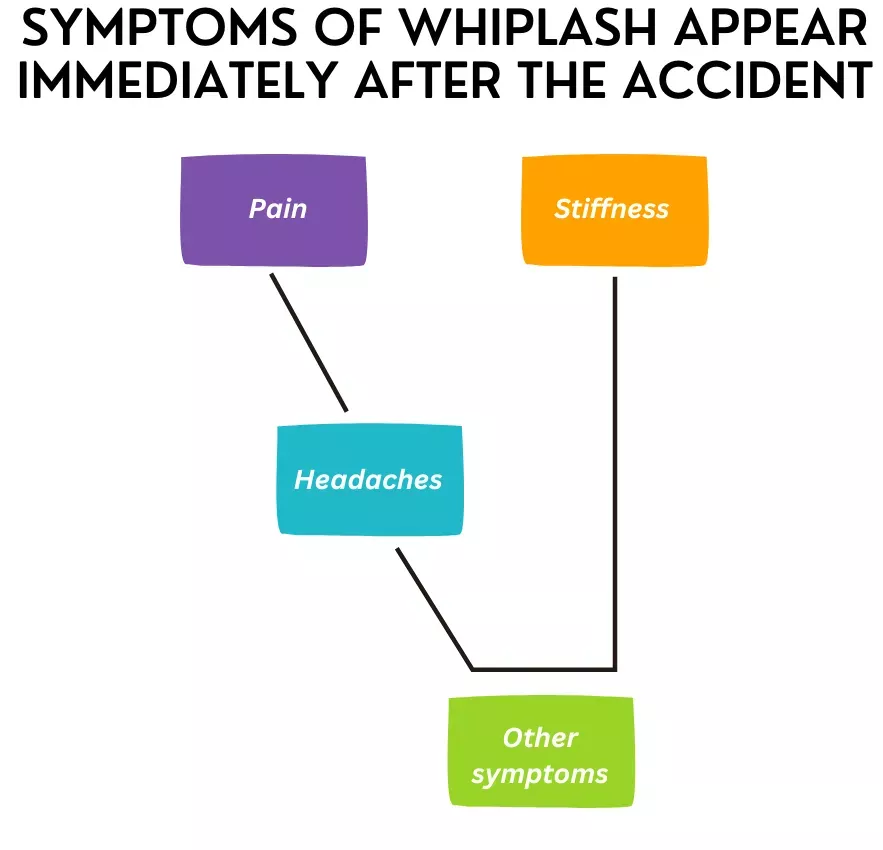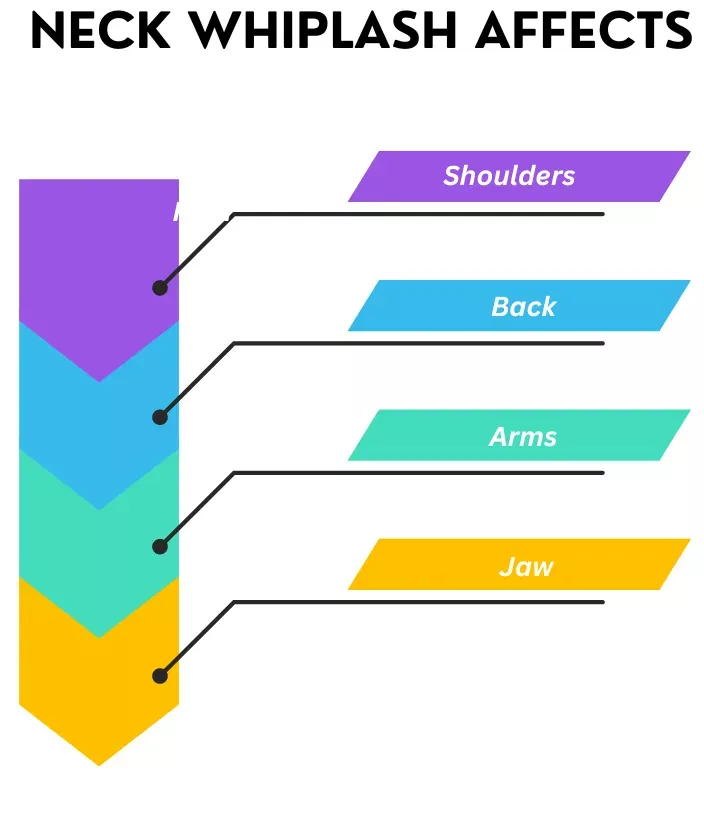TABLE OF CONTENT
Common Misconceptions About Whiplash
The term whiplash is often surrounded and misunderstood by myths. It’s an injury that occurs when one suffers from jolting or forceful movement of the neck. Whiplash Misconceptions result in confusion and misinformation. Herein, we debunk some of the most common whiplash myths that give a better understanding.
Some Whiplash Myths
Below are some myths of whiplash that are discussed here:
Whiplash only occurs in high-speed car accidents.
One of the whiplash misconceptions is that its injuries only occur in high-speed car accidents. It is far from the truth. Neck injuries can occur in low-speed collisions, as slow as 5-10 mph. Any sudden movement of the neck in any direction may strain the
- Muscles
- Joints
- Ligaments
It can cause physical injuries.
As per ABI Survey, more than 1,500 whiplash claims are made in the UK every day.
Symptoms of Whiplash Appear Immediately After the Accident
Another common myth about neck strain is that the symptoms always appear right after the incident. In reality, symptoms do not always appear directly. The symptoms such as:
- Pain
- Stiffness
- Headaches
- Other symptoms
These symptoms take their time to develop. It could be hours or days. But even if you initially feel fine you need to see a doctor.

Whiplash Is Not a Serious
Neck Trauma is just a minor injury that does not require any sort of examination by a physician. It is also one of the most concerning myths. It leads to untreated injuries and chronic pain associated with it. Neck injury might be extensively painful if it is not treated on time. It may also lead to long-lasting disability issues and chronic pain in later life.
Whiplash Affects Only the Neck
One of the biggest myths about whiplash is that it affects the neck only. Its pain can involve other parts of the body, including the
- Shoulders
- Back
- Arms
- Jaw
Some people also develop emotional disorders following an incident. Understanding whiplash as a multidimensional condition is helpful in addressing all the potential effects.
Whiplash Will Heal by Itself Without Any Medical Care
Another whiplash misconception will just disappear over time without treatment. Well, it’s true in some cases neck strain does get better through rest. Ignoring the injury or delaying treatment can lead to long-lasting chronic pain and disability.

No imaging, physiological, or psychological study provides specific diagnostic criteria. In the acute period up to 2 weeks, soft collars or rest and work-leave do not shorten the duration of neck pain.
Arthur A. Rodriquez
Whiplash Is Easy to Fake
It is easy for claimants to fake or exaggerate their symptoms. Neck injury is a serious matter that has an impact of weakening. Doctors use a variety of whiplash treatments in their diagnosis, such as
- Imaging studies
- Physical examinations
Whiplash Only Affects Adults
Though it is common in adults, it may also take place in children. The anatomy of the neck differs in children from that in an adult. Therefore, the risk of injury may be even higher. Thus, this fallacy ignores the careful observation and proper treatment of a child.
Conclusion
Understanding whiplash misconceptions and myths associated with the condition will help dispel them. It will
- Result in incorrect therapy
- Misdiagnosis
- Unnecessary protracted suffering in the long term
Neck Injury can be a very complicated condition. Knowing the truths behind whiplash myths will contribute to total recovery.
Contact Concise Medico if you need physiotherapy or rehabilitation services.
Common Misconceptions About Whiplash
The term whiplash is often surrounded and misunderstood by myths. It’s an injury that occurs when one suffers from jolting or forceful movement of the neck. Whiplash Misconceptions result in confusion and misinformation. Herein, we debunk some of the most common whiplash myths that give a better understanding.
Some Whiplash Myths
Below are some myths of whiplash that are discussed here:
Whiplash only occurs in high-speed car accidents.
One of the whiplash misconceptions is that its injuries only occur in high-speed car accidents. It is far from the truth. Neck injuries can occur in low-speed collisions, as slow as 5-10 mph. Any sudden movement of the neck in any direction may strain the
- Muscles
- Joints
- Ligaments
It can cause physical injuries.
As per ABI Survey, more than 1,500 whiplash claims are made in the UK every day.
Symptoms of Whiplash Appear Immediately After the Accident
Another common myth about neck strain is that the symptoms always appear right after the incident. In reality, symptoms do not always appear directly. The symptoms such as:
- Pain
- Stiffness
- Headaches
- Other symptoms
These symptoms take their time to develop. It could be hours or days. But even if you initially feel fine you need to see a doctor.

Whiplash Is Not a Serious
Neck Trauma is just a minor injury that does not require any sort of examination by a physician. It is also one of the most concerning myths. It leads to untreated injuries and chronic pain associated with it. Neck injury might be extensively painful if it is not treated on time. It may also lead to long-lasting disability issues and chronic pain in later life.
Whiplash Affects Only the Neck
One of the biggest myths about whiplash is that it affects the neck only. Its pain can involve other parts of the body, including the
- Shoulders
- Back
- Arms
- Jaw
Some people also develop emotional disorders following an incident. Understanding whiplash as a multidimensional condition is helpful in addressing all the potential effects.
Whiplash Will Heal by Itself Without Any Medical Care
Another whiplash misconception will just disappear over time without treatment. Well, it’s true in some cases neck strain does get better through rest. Ignoring the injury or delaying treatment can lead to long-lasting chronic pain and disability.

No imaging, physiological, or psychological study provides specific diagnostic criteria. In the acute period up to 2 weeks, soft collars or rest and work-leave do not shorten the duration of neck pain.
Arthur A. Rodriquez
Whiplash Is Easy to Fake
It is easy for claimants to fake or exaggerate their symptoms. Neck injury is a serious matter that has an impact of weakening. Doctors use a variety of whiplash treatments in their diagnosis, such as
- Imaging studies
- Physical examinations
Whiplash Only Affects Adults
Though it is common in adults, it may also take place in children. The anatomy of the neck differs in children from that in an adult. Therefore, the risk of injury may be even higher. Thus, this fallacy ignores the careful observation and proper treatment of a child.
Conclusion
Understanding whiplash misconceptions and myths associated with the condition will help dispel them. It will
- Result in incorrect therapy
- Misdiagnosis
- Unnecessary protracted suffering in the long term
Neck Injury can be a very complicated condition. Knowing the truths behind whiplash myths will contribute to total recovery.
Contact Concise Medico if you need physiotherapy or rehabilitation services.




